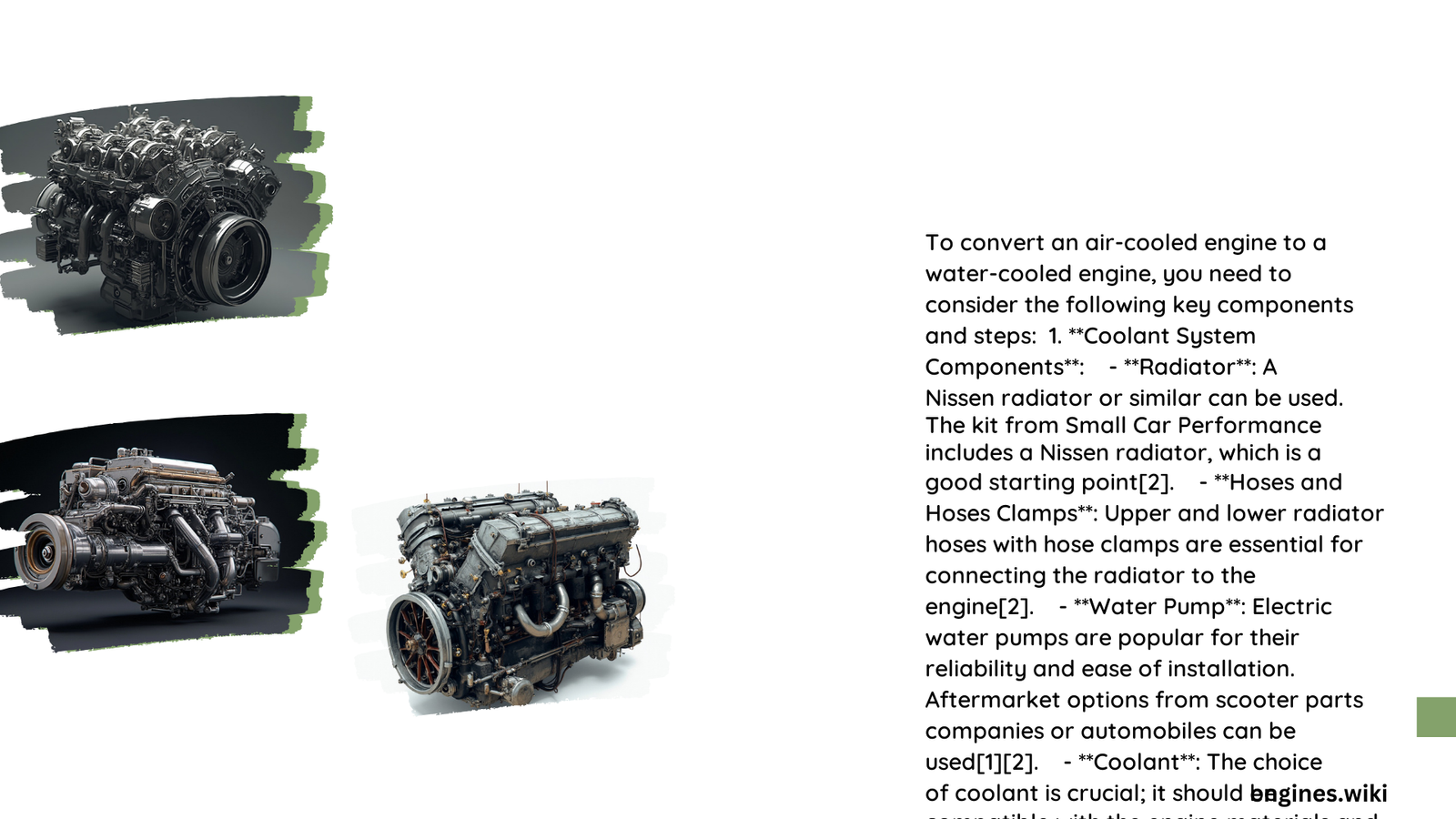Converting an air-cooled engine to a water-cooled system represents a sophisticated engineering transformation that enhances thermal management, performance, and reliability of automotive powerplants. This comprehensive technical guide explores the intricate process of transitioning from air-cooled to water-cooled configurations, providing automotive enthusiasts and mechanics with detailed insights into component selection, installation techniques, and performance optimization strategies.
Why Convert from Air Cooled to Water Cooled?
What Are the Primary Motivations for Conversion?
Air-cooled engines have inherent limitations in heat dissipation and thermal stability. Water-cooled systems offer several compelling advantages:
- Superior Temperature Regulation
- More consistent engine temperature
- Reduced thermal stress on engine components
-
Enhanced heat distribution
-
Performance Enhancement
- Higher compression ratio potential
- Improved power output
- Better engine longevity
What Components Are Essential for Conversion?
Conversion Kit Components
| Component | Function | Typical Specifications |
|---|---|---|
| Water Jacket | Surrounds engine block | Precision-machined aluminum/cast iron |
| Radiator | Heat exchange mechanism | Aluminum core, multiple cooling fins |
| Water Pump | Circulates coolant | Mechanical or electric drive |
| Thermostat | Regulates coolant flow | Temperature range 80-95°C |
| Coolant Hoses | Transport cooling fluid | High-temperature synthetic rubber |
Detailed Conversion Process

How to Prepare for Engine Conversion?
Pre-Conversion Assessment
- Thoroughly inspect engine block integrity
- Measure cylinder bore and piston dimensions
- Evaluate existing mounting points
- Calculate required modifications
What Tools Are Necessary?
Essential Tools:
– Precision measuring instruments
– Welding equipment
– Machining tools
– Torque wrenches
– Cooling system pressure tester
How to Install Water Cooling System?
Step-by-Step Installation
- Engine Disassembly
- Remove air-cooling fins
- Clean engine block surfaces
-
Inspect for potential machining requirements
-
Water Jacket Preparation
- Machine precise water channels
- Ensure uniform coolant flow
-
Apply high-temperature sealants
-
Radiator and Pump Installation
- Mount radiator in optimal airflow location
- Connect water pump to crankshaft
- Install coolant circulation system
What Challenges Might You Encounter?
Common Conversion Obstacles
- Custom bracket fabrication
- Precise machining tolerances
- Potential power loss during modification
- Complex sealing requirements
Performance Metrics After Conversion
What Performance Improvements Can You Expect?
Quantifiable Enhancements:
– Temperature stability: ±5°C variation
– Power output increase: 7-15%
– Engine lifespan extension: 30-50%
Cost and Considerations
How Much Does Conversion Cost?
Estimated Conversion Expenses:
– Basic kit: $500 – $1,500
– Professional installation: $1,500 – $3,000
– Custom fabrication: $2,000 – $5,000
Conclusion
Converting an air-cooled engine to water-cooled requires technical expertise, precise planning, and careful execution. While challenging, the performance benefits make this modification attractive for automotive enthusiasts seeking enhanced engine reliability and efficiency.
